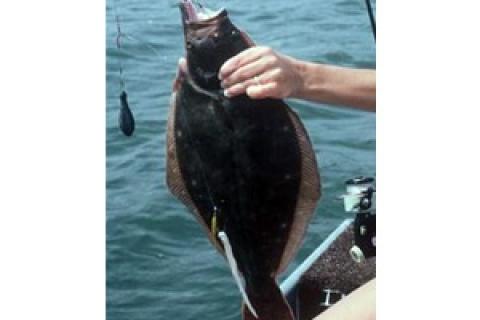
 One of the finest ways I know to spend a hot summer day is drifting for flounder. If you live anywhere near the East Coast or Gulf Coast there's likely a good spot or two within driving distance where you can enjoy this relaxing yet intriguing sport.
One of the finest ways I know to spend a hot summer day is drifting for flounder. If you live anywhere near the East Coast or Gulf Coast there's likely a good spot or two within driving distance where you can enjoy this relaxing yet intriguing sport.
And when you succeed and head home with a few tasty flounder in the cooler ready to be filleted and pan-fried or broiled in lemon and butter, you'll experience the second reward this fish offers besides fun fishing — great eating. Few fish can match the flounder for terrific taste and texture. And that's especially true when you catch your own and know they've been kept cool and on ice.
Although they can be taken with lures and flies, most anglers, including myself, usually use bait for this quarry. In many areas, minnows are the preferred offering. Mummichogs (killies) are favored along the Mid-Atlantic. In other areas different species get the nod. Whichever variety you use, keep them lively and fresh in a bait bucket, cooler or live well.
The truism "big bait, big fish" doesn't always hold true in angling. But flounder fishing is one case where it is valid. Minnows of three or more inches are best, even up to 4 to 5 inches.
If you don't have minnows, several other baits work well. One is a strip of flesh from a freshly-caught fish cut in a long tapered triangle, from 3-7 or even 8 inches long if truly large flounder are present. Hook these about a quarter to half an inch in on the thick end of the taper. Impale minnows through both lips from the bottom up.
Another option is a strip of squid cut in a long triangle shape. In some areas anglers like a small squid strip and a live minnow both on the same hook-dubbed the "Eastern Shore Sandwich." Use size 1-2/0 hooks, either plain or with a strand of bucktail or synthetic hair tied on for extra bulk and flutter. In popular flounder fishing areas you can buy rigs already made up.
Terminal gear consists of an 18-24 inch piece of mono leader 10-20 pound test tied to a three-way swivel. On another eye of the swivel, attach a 5-10 inch piece of similar test line and a dipsey sinker of 1 to 5 ounces. The third eyelet is for the line from your rod. Use as little weight as possible to reach the bottom in the depth, wind and current you're faced with.
Spinning or baitcast gear works fine. Rods should measure 6-7 1/2 feet and have some backbone but a flexible tip.
Find out from locals, marinas and fishing reports online or in newspapers where the fish are biting. Then watch where most boats are drifting. That's likely where the fish are concentrated, though you can certainly explore and try to find your own hotspots.
In some areas anglers troll for flounders or cast and retrieve. Generally, though, drifting over and over through prime spots along flats, channel edges, creek bends and drop-offs is the way to go. Slack tide is the poorest time. You need some movement to pull the baits along behind the boat.
When a fish strikes, many people feed line. Others strike immediately. I've found the best approach is to simply pull the fish along for a short ways as it munches on the fish strip or minnow. How long is an open question. You'll soon get a feel for when the fish has the bait firmly. Then it's time to set up by reeling quickly and lifting the rod tip sharply. It can be just a few seconds or up to half a minute if a fish is nibbling tentatively.
Once you set up, the fun begins. Or rather the first part. The second part begins when you slip the fillets of that fish into a pan of butter, olive oil and garlic and sprinkle on fresh lemon juice!
- 3558 views

